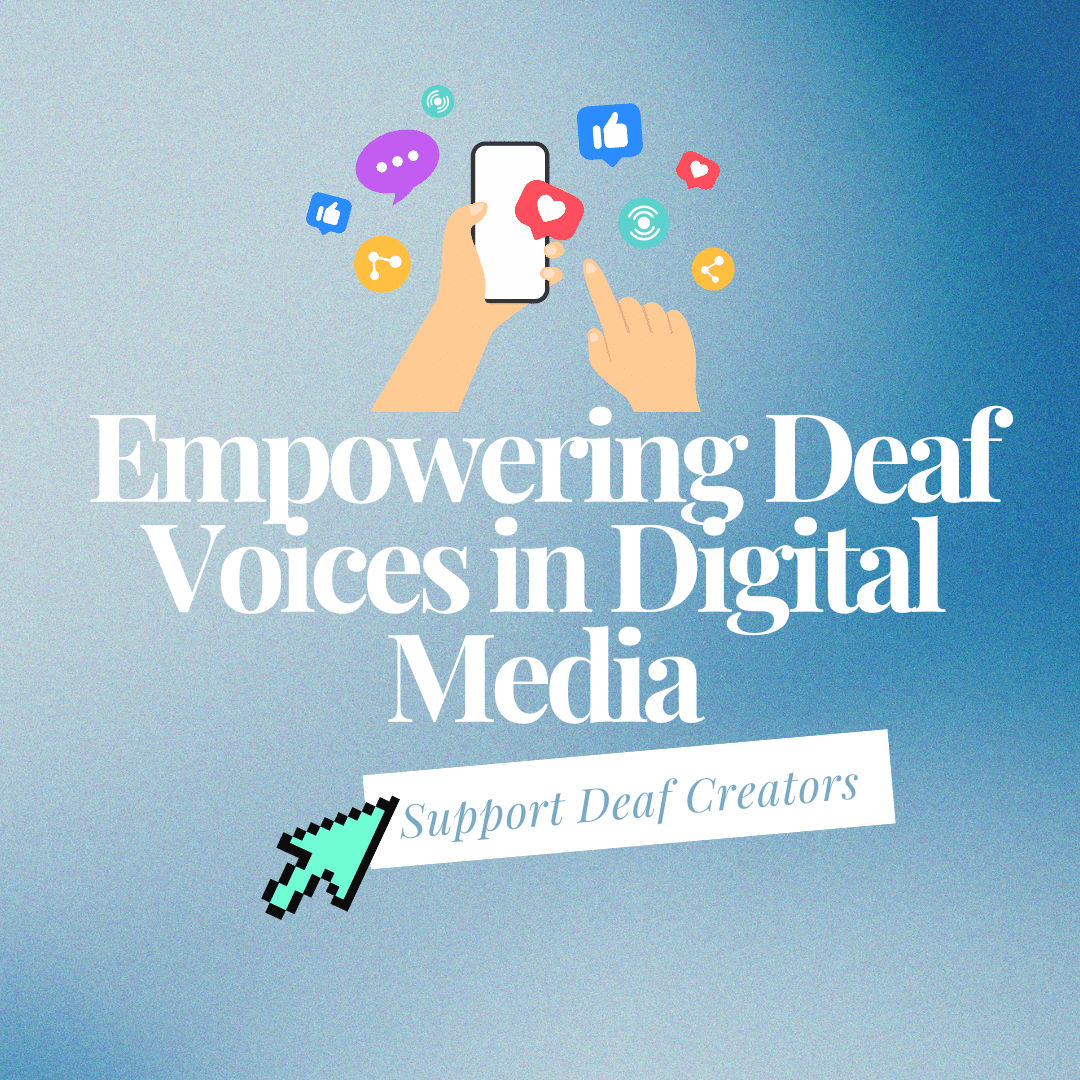
Deaf Culture Essentials
- by Michelle Jay
- 19 Comments
Learning about Deaf Culture is perhaps the most important part of learning ASL.
Deaf Culture was first truly recognized in 1965. The idea that Deaf people had a culture of their own was first written in the Dictionary of American Sign Language by William Stokoe, Carl Croneberg, and Dorothy Casterline.
This was a huge step for Deaf people. Before this book was written, the medical industry and those involved in Deaf education only saw Deaf people in terms of their hearing loss. The thought of Deaf people being a part of their own culture was unheard of at that time.
Nonetheless, Deaf culture is exactly what Carol Padden defines as a culture: a set of learned behaviors of a group of people that share a language, values, rules for behavior, and traditions.
We share the most essential information about Deaf Culture on this page, but we highly recommend Don’t Just “Sign”… Communicate!: A Student’s Guide to ASL and the Deaf Community if you are learning ASL. The guide includes all of the Deaf Culture information you need to know so you will better understand the Deaf community and be fully prepared to talk to Deaf people.
There are many famous deaf people who introduced the world to Deaf Culture and proved that deaf people can, in fact, make history.
Language
Language and culture go hand-in-hand (no pun intended!) Without language, it’s impossible to learn the culture. Without culture, language has nothing to refer to.
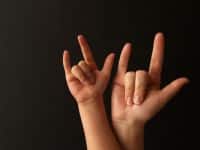 The members of Deaf culture do share a language… American Sign Language, of course!
The members of Deaf culture do share a language… American Sign Language, of course!
It was not until the Dictionary of American Sign Language was published that ASL was regarded as a real language. William Stokoe was the first to break ASL down into its linguistic components and prove that it truly is a language… not merely “English on the hands” or “pictures in the air” like people thought.
American Sign Language is a living, breathing linguistic masterpiece that is specially made for the Deaf.
Values
The culture of the Deaf consists of a few important values:
Language
Sign language is the most valued aspect of Deaf Culture. Spoken English is almost completely useless to the Deaf. Even if they can learn to read lips, the comprehension of English doesn’t even come close to the language of ASL. If the ears don’t work, why would you force them to?
ASL is the natural language for the Deaf. To equate the fluency of English to hearing people, ASL is the match for Deaf people. They are not meant to use a language that is not their own, nonetheless be forced to.
The Deaf also aim to preserve ASL. There are many language systems that have been invented to try to “help” deaf children learn English (Sign Supported Speech, Signed English, and Cued Speech, to name a few). These are not languages and are not supported in Deaf culture. They have, if anything, deprived deaf children of their true language and ability to communicate effectively.
ASL is so important for Deaf people to communicate, they created vlogs (video logs). They are similar to blogs, but consist of videos. That way, the Deaf can communicate with each other in their first language.
 Not speaking is highly valued in this culture. Speech is commonly forced on deaf children and represents confinement and deprivation to the Deaf adult. When speech education is forced, deaf children are deprived of one of their core needs… language. The only language that is truly possible and effective is ASL.
Not speaking is highly valued in this culture. Speech is commonly forced on deaf children and represents confinement and deprivation to the Deaf adult. When speech education is forced, deaf children are deprived of one of their core needs… language. The only language that is truly possible and effective is ASL.
When a hearing friend of a Deaf person turns and continues conversation as usual with another hearing friend, the Deaf person is left out. This is incredibly rude when the person could have signed or kept the Deaf friend included on what was being said (interpreting).
Exaggerated mouth movements can be seen as rude. There are only a limited number of mouth movements that are used while signing. Much-more-than-necessary mouthing can be seen as making fun of the Deaf (and you don’t want that!)
Socializing
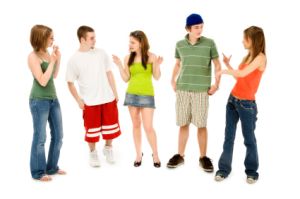
Socializing is a very important value of Deaf culture. Because there are so few Deaf people in an area, social lives are invaluable. In a society where the Deaf are commonly misunderstood, the support of others is more than necessary. Deaf dating sites have become very popular for this reason.
Back before text messaging and modern technology, Deaf people would only communicate with each other in person or in letters. They would take advantage of the little time they had to mingle with another Deaf person…
Nothing much has changed since then!
Deaf people will stay at a gathering very late to get in as much time as possible with their friends. When a hearing gathering generally ends around 10 at night, a Deaf gathering can end at 3 in the morning!
There are many Deaf events available to everyone (deaf and hearing!) who wants to socialize with the Deaf. Visit our Deaf Events page to find events in your area.
The Deaf Olympics (Deaflympics) have also been competing since 1924.
Literature
Much like the American culture, Deaf cultural values are not openly written or explained.
 Deaf children learn how to fit in with Deaf culture from positive and negative feedback about behaviors and from the stories and literature that are passed down through the generations. Art and literature are highly valued in Deaf Culture.
Deaf children learn how to fit in with Deaf culture from positive and negative feedback about behaviors and from the stories and literature that are passed down through the generations. Art and literature are highly valued in Deaf Culture.
There is a wealth of Deaf art, poetry, stories, theatre, media, games, deaf jokes, and books that teach the culture (most of which are not written down!) These avenues always demonstrate and support the way Deaf people live their lives: being Deaf and proud!
One fantastic artistic informational piece about Deaf culture is the film Through Deaf Eyes, narrated by Emmy award-winning actress Stockard Channing. If you have not seen this movie, you need to.
There are many famous Deaf stars who have brought the Deaf Community and ASL into people’s homes. Linda Bove played Linda the Librarian on Sesame Street, Marlee Matlin won an Academy Award for her debut performance in Children of a Lesser God, Deanne Bray played Sue Thomas on Sue Thomas: F.B.Eye, and Shoshannah Stern is the only deaf actor to ever have a role on two prime-time TV shows at the same time, to name a few.
And let’s not forget Switched at Birth–a popular television show featured on ABC Family that has truly brought American Sign Language and Deaf Culture into the living rooms of today’s generation. It is the first television show to feature several deaf actors/characters and entire scenes shot using only ASL.
ASL not only shares its expressiveness with stories and poetry, it also greatly enhances music. ASL is popularly used in the interpretation of songs. Songs interpreted into ASL aren’t used very often in the Deaf community–they are more popular with the hearing and hard-of-hearing ASL crowd–but it is still a common and beautiful Deaf culture art form. You can see some of the best ASL song interpretations on our Best Songs in Sign Language page. You can also learn how to sign songs on our Interpreting Songs for the Deaf page.
Rules for Behavior
Deaf people are not only part of a like-minded group. They are part of a culture that has a set of learned behaviors that you need to know to be able to “fit in.”
Eyes
In hearing culture, it is rude to stare. However, in Deaf culture, staring is necessary. If you break eye contact while a person is signing to you, you are incredibly rude! That’s like plugging your ears when someone is speaking to you!
Facial Expression
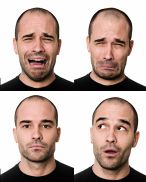 In hearing culture, facial expression is very limited. If you move your face or body a lot while you are talking, you can be seen as “weird” (and nobody wants to be weird!)
In hearing culture, facial expression is very limited. If you move your face or body a lot while you are talking, you can be seen as “weird” (and nobody wants to be weird!)
However, in Deaf culture, facial expression and body movement is required for ASL. It’s part of ASL grammar!
Introductions
In hearing culture, you normally introduce yourself by your first name only.
Deaf people, however, introduce themselves by their full names, and sometimes even what city they’re from or what school they went to. By city, this means the city you grew up in, not what city you are currently residing in. And by school, this means a residential school you attended. The Deaf community is very small, and Deaf people like to find those specific commonalities with each other.
What Deaf people call themselves is something that also needs to be taken into consideration.
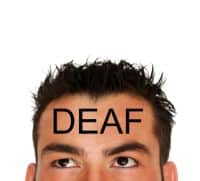 In hearing culture, the terms used to describe deaf people have to do with their hearing loss. The term “hard of hearing” is better than “deaf” in hearing culture. Hard of Hearing people are generally regarded as being easier to communicate with and fit in better with hearing people. Deaf people, on the other hand, are seen as being difficult to communicate with and that they may not even speak. The term “hearing-impaired” has been used to be “politically correct” to identify them both, but the more accepted term now to refer to everyone with a hearing loss is the “deaf and hard of hearing” community.
In hearing culture, the terms used to describe deaf people have to do with their hearing loss. The term “hard of hearing” is better than “deaf” in hearing culture. Hard of Hearing people are generally regarded as being easier to communicate with and fit in better with hearing people. Deaf people, on the other hand, are seen as being difficult to communicate with and that they may not even speak. The term “hearing-impaired” has been used to be “politically correct” to identify them both, but the more accepted term now to refer to everyone with a hearing loss is the “deaf and hard of hearing” community.
In Deaf culture, though, the terms are quite the opposite. There is one label for people who are part of Deaf culture, and that is “Deaf” with a capital D. In Deaf Culture, Deaf people highly value their deafness.
This label has nothing to do with hearing loss. Regardless of how much better your hearing is than the next guy, you’re still all “deaf.” Using the term “hard of hearing” can be seen very negatively… like you’re saying you’re better than everyone else (because that’s the one-up in hearing culture).
You will also see both the terms “deaf” and “Deaf” used. They are referred to as “little d” and “big D.” “Little d” deaf refers to people who have lost their hearing. “Big D” Deaf refers to people who are involved in Deaf culture and share the values, behaviors, and language of that culture. Just because you are deaf, doesn’t mean you are Deaf. And in some cases, just because you are Deaf doesn’t mean you are deaf (as is the case for some hearing children of Deaf parents known as CODAs or “Children of Deaf Adults”).
The term “hearing-impaired” is seen even more negatively because that says there is something wrong with being Deaf (which is the complete opposite of what Deaf people believe!) Most hearing people believe that deafness is a handicap. But, au contraire! It indeed, is not. Deaf people can do everything except hear. Everything! In Deaf culture, deafness is not considered a handicap. The only real handicap of deafness is when deaf children are deprived of true communication–ASL.
You can read more tips and sights about interacting with the Deaf community on our Deaf Culture Do’s and Don’ts page.
Joining the Deaf Community
If you want to be involved in the Deaf Community, you first need to start learning American Sign Language. ASL is the core bond within the Deaf community and Deaf Culture and is the first step for hearing people to get involved. At Start ASL, we offer many Start ASL course options to suite your time and budget, so be sure to check them out.
If you are already learning American Sign Language, it is important to get involved with the Deaf community. Many believe that learning ASL within the Deaf community is the only true way to become fluent in the language.
You also need to understand that the Deaf Community is different from Deaf Culture, but both are part of the Deaf Experience and involves Deaf Identity. Now that you’ve learned about Deaf Culture, you are familiar with the customs and rules of behavior before you start to get involved with the community.
If you are ready to get involved, we go into more detail in this article: The Deaf Community and How You Can Get Involved, so be sure to read that article as well.
The Best Deaf Culture Books
In this article, you have learned a few of the most important details about Deaf culture. But you don’t need to stop here! For more in-depth learning, we highly recommend all of the Deaf culture books below:
Please note that when you choose to purchase through the external links on this website (in many but not all cases) we will receive a referral commission. However, this commission does not influence the information we provide in this site. We always give honest opinions and reviews to share our findings, beliefs, and/or experiences. You can view our full disclosure on this page.
Don’t Just “Sign”… Communicate!: A Student’s Guide to ASL and the Deaf Community
We only share general information about the history of Deaf Culture on this website, so we highly recommend Don’t Just “Sign”… Communicate! if you are learning ASL. The guide includes all of the essential Deaf Culture information you need to know so you will better understand the Deaf community and be fully prepared to interact in the Deaf community.
A Deaf Adult Speaks Out
Leo Jacobs is a great author. This book is his account on what it is like living in hearing world as a Deaf person. This book is easy to read and covers excellent information about issues such as mainstreaming and how it affects Deaf children, total communication versus oralism, employment for Deaf people, and public policy in relation to the Deaf. We highly recommend this book to understand what it is like for Deaf people and what the members of Deaf culture value and believe.
Everyone Here Spoke Sign Language: Hereditary Deafness on Martha’s Vineyard
This is a fantastic book about the fascinating story of Martha’s Vineyard–an island where deafness occured in 1 out of every 155 people. This book includes a lot of fun anecdotes as well as serious insight into the world of sign language. We highly recommend having this book as a part of your collection.
Inside Deaf Culture
This is a fantastic book that outlines the history of deaf culture from the beginning of America to the present time. It is a fascinating look at Deaf culture and how it has changed over time as well as how it withstood the trials of hearing society. We highly recommend this book if you want to learn more about Deaf culture.
The Other Side of Silence: Sign Language and the Deaf Community in America
This is another great history of Deaf Culture book. It gives a wonderful unbiased look at both sides of the oralist versus manualist (speech versus sign) argument. We highly recommend it so that you can fully understand how and why this argument continues into today.
Deaf in America: Voices from a Culture
Deaf in America is written by two Deaf authors who explain the difference between “Deaf” and “deaf” more fully. They discuss the importance and value of American Sign Language and also go into detail about the different arts that exist in the history of Deaf culture. This is a more lively look at the history of Deaf culture and what truly encompasses it. Highly recommended.
American Deaf Culture: An Anthology
This collection is an invaluable resource. Some of the stories just talk about the history of Deaf culture in general while others consist of personal stories and experiences from Deaf people. With a variety of authors, this book is a great look into the lives of many Deaf people–not just one. We highly recommend it.
A Journey Into the Deaf-World
This book is a great introduction into the values and beliefs of Deaf culture and the Deaf World in general. We highly recommend it for any new ASL or Deaf Studies student. This book clearly explains everything you need to know about the history of Deaf culture, the education of the deaf, and the oppression that Deaf people have gone through.
TRAIN GO SORRY: Inside a Deaf World
This portrait of New York’s Lexington School for the Deaf is not just a work of journalism. It is also a memoir, since Leah Hager Cohen grew up on the school’s campus and her father is its superintendent. As a hearing person raised among the deaf, Cohen appreciates both the intimate textures of that silent world and the gulf that separates it from our own.
The Mask of Benevolence: Disabling the Deaf Community
This book is truly amazing and is a must-read for all ASL students and members of the Deaf community. This book does not sugar coat the truth about the oppression of Deaf people and the medical field’s view on seeing deaf people as disabled. It is cut and dry with its facts and research and how cruel hearing society has been to Deaf people and how they continue to be this way today. This book NEEDS to be a part of your library.
Understanding Deaf Culture: In Search of Deafhood
This book provides a different perspective on Deaf culture. The book assesses culture in general and applies it to Deaf communities. The book discusses the medical field’s view of “deafness” and contrasts that with the new concept of “deafhood” which is how Deaf people truly view themselves. We recommend this book for anyone wanting to learn more about the Deaf identity and Deaf pride.
A Place of Their Own: Creating the Deaf Community in America
Some books just talk about Deaf culture and how it is today. This book actually goes in depth and back into Deaf history to explain the trends and the changes that have taken place in the Deaf community. We highly recommend this book for anyone learning ASL and becoming involved in the Deaf community.
Deaf World: A Historical Reader and Primary Sourcebook
There is so much information in this book. It is a compilation of writings from many authors. The discussions covered vary from broad topics like American Sign Language and the Deaf community to very specific topics such as the employment of deaf people in entertainment, deafness among blacks, and the prejudice against the disabled. There is so much information covered in this book that it is a must have for any ASL or Deaf Studies student.
Open Your Eyes: Deaf Studies Talking
We also recommend this book for any ASL student. This book is another compilation of writings from many authors. They delve mostly into topics surrounding Deaf identity, how Deaf identity intersects with sexuality, family, gender, race, and disability, and how Deaf culture shows insight to issues of language, identity, power, and society’s view of normalcy.
Through Deaf Eyes: A Photographic History of an American Community
Through Deaf Eyes is an amazing movie that really goes in depth about the views and beliefs of Deaf culture and how hearing culture has affected it. We highly recommend the movie as well as this book for anyone involved or becoming involved in the Deaf community.
Teach Me to Love Myself: Memoir of a Pioneering Deaf Therapist
If you would like to really get inside the head of a very successful deaf person who did not see her deafness as a disability, but as a part of her character, then this is a really great book for you. Holly Elliott is a wonderful author and is probably the first professionally trained deaf therapist in the US. Her story is inspiring, informative, and really proves to the world that deafness is not a disability, but rather something that influences character and experiences. This is a non-fiction book that reads like a beautiful novel and we highly recommend it to anyone who would like to learn more about how pioneering deaf people live their lives.
Deception
Deception takes us on an emotional journey. In this powerful theatre-of-the-mind memoir, Deb Myers examines the devastating consequences of the sexual abuse that followed her life. At sixteen, after a break up with her boyfriend, she reached out to a much older married teacher for emotional support. Their friendship crossed the line, resulting in an affair that lasted more than two years. You will catch a glimpse of Deb’s early life as a Deaf girl of Deaf parents, along with the events leading up to the affair. Then you’ll witness the aftermath of the abuse – her plunge into depression, the incessant guilt over the relationship, and the lingering effects on her marriage. Yet, along the way, God gently worked through Deb’s life and lead her into the role of a pastor’s wife, the gradual strengthening of her marriage, and eventually, the painful – yet freeing – realization that the abuse was not her fault. The result is an uplifting story of God’s grace, mercy, and redemption.
These books are the absolute best for learning about Deaf Culture. They all cover different areas, but reading even a few of these books will greatly increase your understanding of the Deaf.
Have Experience with Deaf Culture? Help Others!
Do you have any Deaf Culture do’s and don’ts you can add to this page? Please do! This will help other visitors avoid embarrassment and learn the correct rules for behavior!
Share your knowledge in the comments below!

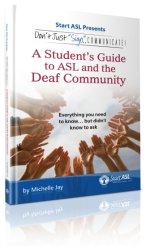

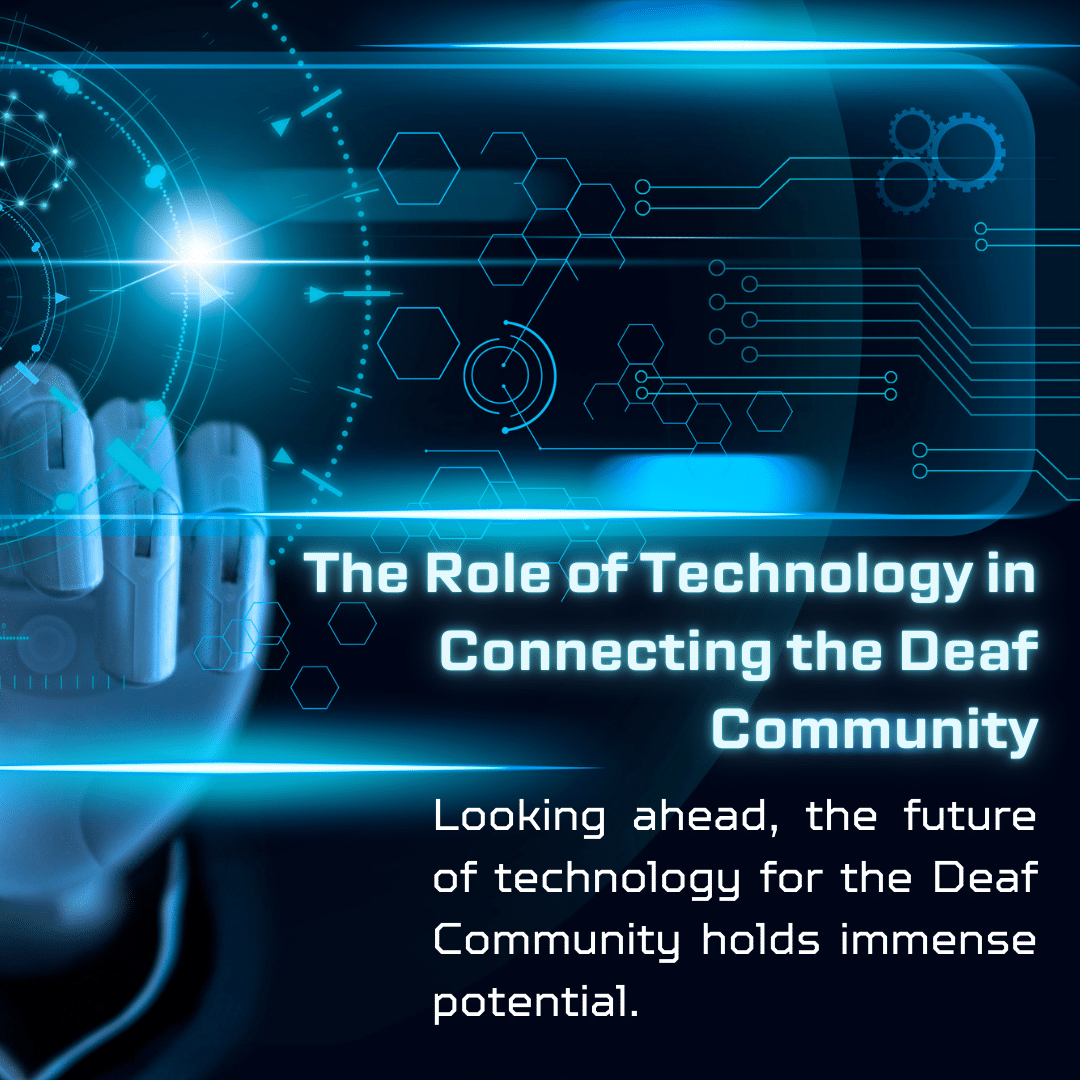
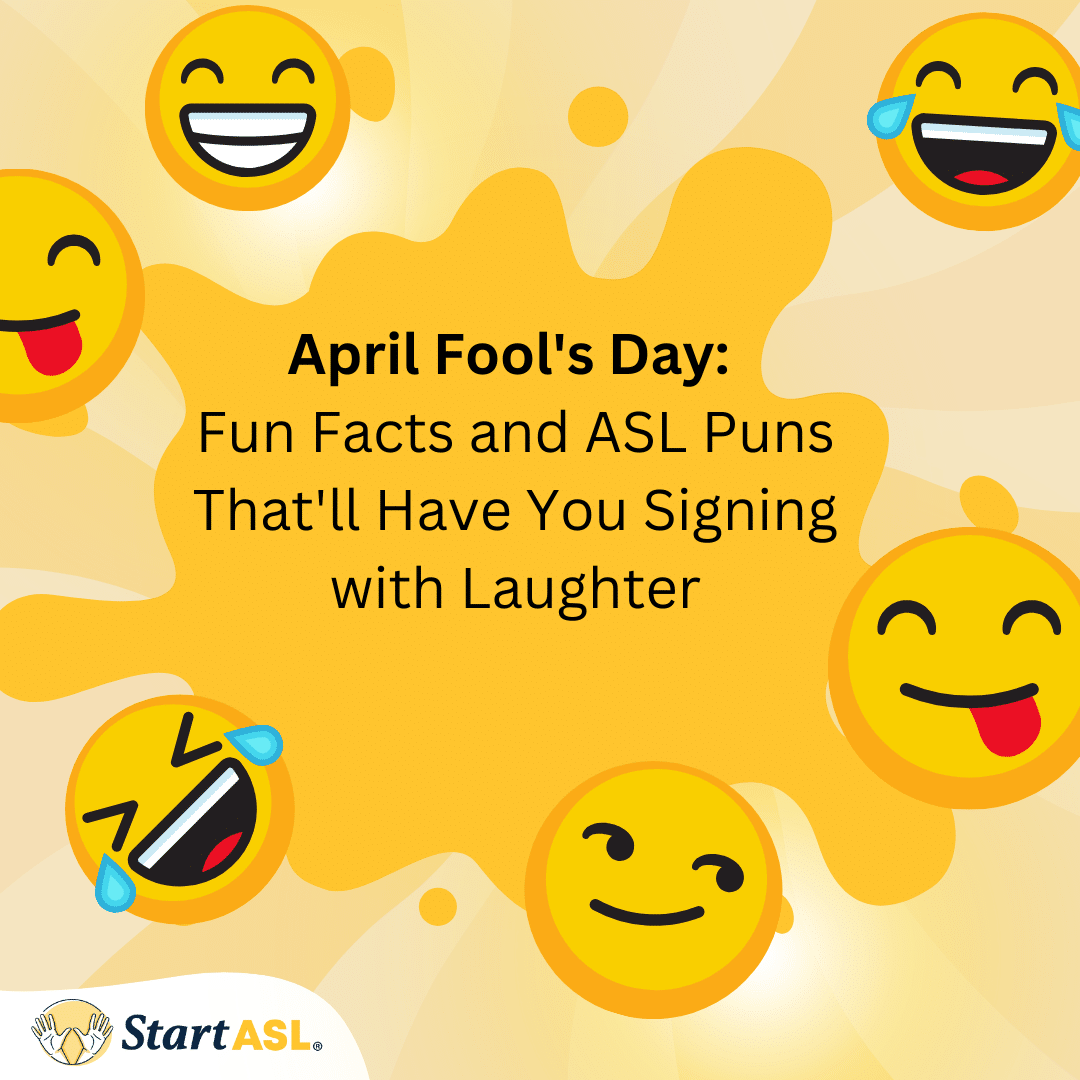
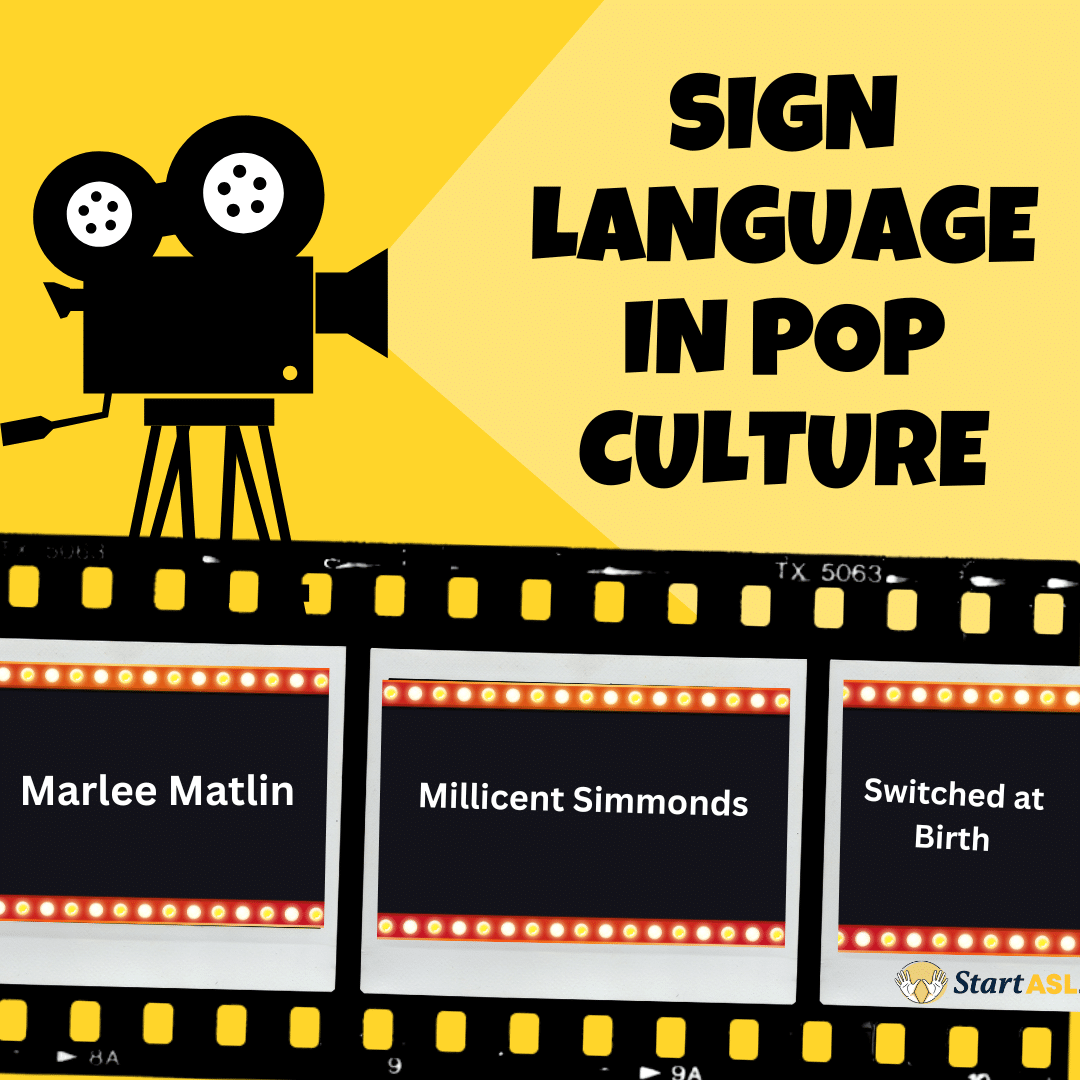
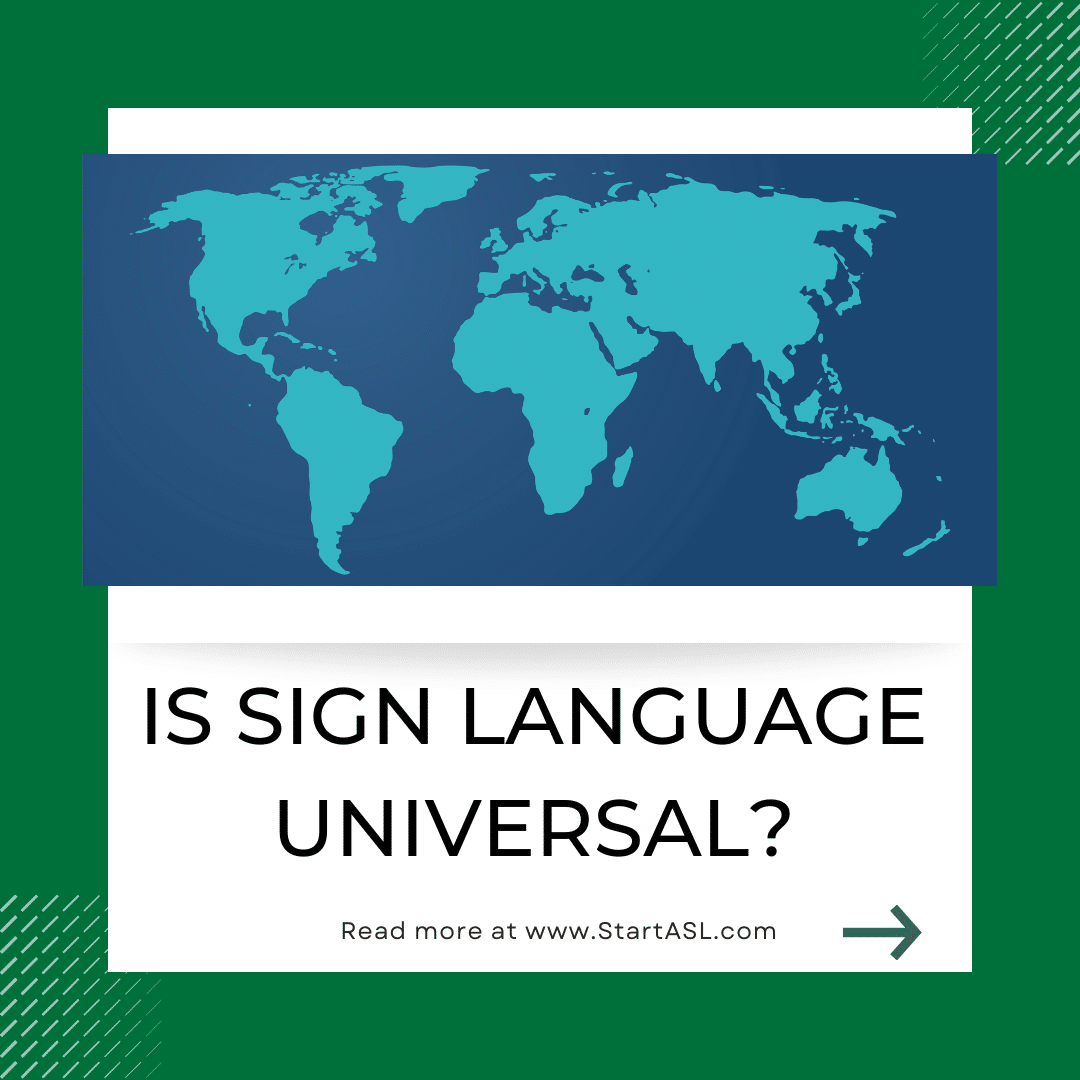





19 Responses
nice
Hey. I really liked this and am really happy I found the free lessons. I have always wanted to learn sign language but I started after reading a book from one of my favorite Authors. In his book, there was a deaf elf and I really wanted to understand some of the signs better so I got started. I have never actually met a deaf person, but I really would like to. They seem so nice and I would like to help my self and get to know them better and open up a new area of people I can communicate with. Right now, I speak English and that is just about it.
Hi just a few questions I’m having a hard time finding the answers to:
1. Would it be wrong of me to sign that I’m deaf instead of just hard of hearing? I wasn’t sure which would be more rude and I don’t want to give anyone the impression that I’m trying to overstate my lack of hearing or making me out to be “better” because I can hear a bit.
2. I do actually have a disability that affects me mentally and physically but I know that those who are hearing tend to get very frustrated very quickly that I ask them to repeat themselves. Would you happen to know if this is also common in the Deaf community? I know of course everyone is different but I’ve noticed a lot of people tend to get sick of trying to communicate after a short while and want to avoid that if I can in the future.
3. (This is just out of curiosity) have you seen any groups gathering online what with all the COVID stuff going on right now? I’ve been looking to make friends online but am unable to video chat currently so I was mostly just wondering if you’ve seen it.
Thank you for answering some or all of these, I apologize if any of this made no sense or was strange to read. Have a great week!
Hi Rowan! Contact us here and we will be happy to answer your questions: https://www.startasl.com/contact-us/
Here is a great review of Deaf Like Me by Thomas S. Spradley and James P. Spradley:
from Rebecca Wenger (Pennsylvania): “Deaf kids are just as smart as hearing kids. With sign language, deaf kids can do anything.” Said by Lynn Spradley. While she can say that now, it was a long journey in getting there. Deaf Like Me is written in a story form that sweeps you into the traumatic experience of the Spradley family. Thomas and Louise Spradley are horrified when they discover that their unborn child is at a high risk of birth defects; all because of a deadly illness called German measles. Their suspicions are soon confirmed in little Lynn’s life. She is deaf. Profoundly deaf, even. Their life takes on a trying spin as they struggle to teach their young daughter to lip read and take on the language that they know. Countless hours and tiring efforts are poured into small Lynn. Her parents long more than anything for Lynn to simply be normal. Normal. But what is normal? When they lack the fruit of their investment, they begin to look elsewhere. The answer takes its time in arriving, but it does arrive. It appears in a special language known to many as American Sign Language. It’s their answer. Her language. And a life changing result. This book will help you understand the journey that many hearing parents with deaf children were on at one time, or maybe are on even now.
Please kindly add two more deaf cultures books I have published, which are part of the deaf culture. “Baltimore’s Deaf Heritage” and “Detroit’s Deaf Heritage” books from http://www.arcadiapublishing.com, you can find those there. :) I am also a Deaflorist (Folklorist), Deaf writer, and a Deaf historian. :)
Keep in mind, the deaf culture(s) existed way before Stoke and his two CO-writers who are DEAF. Deaf cultures existed for years before 1965. :)
I am loving the free lessons you offer. I took ASL in college many years ago, and am refreshing my memory with your courses. My daughter is also interested in learning and that makes my heart happy. I am losing my hearing, just in the past few years, so I am glad I took the classes years ago. I doubt I will ever lose my hearing completely, but only time will tell. I am only 46. I have found that I pick up signs quickly, but am very slow at reading them…its frustrating!
I am hearing and never really thought of the Deaf community because I was not exposed to it until recently. A friend of mine is rapidly loosing her hearing, she is scared, and when she told me how it upset her how isolated she will feel because she can’t learn to hear, but people can learn to sign, and they don’t bother to. It was a huge eye opener for me. So we sat, and she taught me little lessons and I loved being able to communicate with her in a way she felt comfortable. When we would be speaking my pitch was often too high for her, and I would notice the expression on her face and drop my pitch (as comical as I sounded) and I am still doing my best to expand my signing ability… because I want my friend to feel included and not have to go through this change alone. I look forward to teaching my children sign, because the Deaf shouldn’t have to feel isolated in a room full of people.
*let it be noted: not that I wasn’t aware of the Deaf community, but it has been a real change of perspective of how many hearing people go about there lives with tunnel vision, like I did, and it is unfortunate, but I am very glad I’ve had the blinders taken off and I can be a more supportive community member not just to my friend.
I enjoyed this article and am enjoying the free ASL course. ASL has touched my life a number of times and ways and I am beyond thrilled to build on that base. Articles like this should be read by all because clearly even today’s society is still ignorant. The notion that hearing loss is a disability sets my teeth on edge. That said I think hearing people are not the only ones who need educating. Understanding is a two way street, and we are all living in the same world, not every imagined slight is intended that way and that goes for everyone.
To make my point clearer, I have been on vlogs etc and have heard rants stating frequent irritation for exsample when a deaf person was asked if they drive. I would like to point out that not everyone who ever asked that was insinuating an inability brought on by being deaf, there are a great number of hearing, particularly in big cities, whom do not drive. And there are a number of such complaints; my point is don’t be so quick to be offended that you miss someone’s intent.
I did like the article it was cool reading about the Deaf culture I wish was a group ASL for people to meet up to communicate with one another.
Learning ASL has been a life long dream of mine. Now that my children are grown I am going for it. But, where do I begin? I’ve looked locally and had no luck. I really hope you can help me. I really want to make a difference for someone some day. Tammylynn
Hi Tammy, You can get started with our free online classes here: https://free.startasl.com. Enjoy! :)
Hi, I was wondering who the author and when this was published.
Thank you
Hi Lorn, The author is Michelle Jay and this article was first published in August 2008. :)
This is not a comment but I would like more information on how I can help the Deaf. I am trying to start a Social Club or something …..to that affect can you help?
Hello, I think it is great that you want to form a social club, but please know that Deaf people don’t really need your help – they have no trouble forming clubs on their own. What would be really useful is a social club for people learning ASL. You may consider forming a club like this in your area on Meetup.com.
I thought t was really Instering. I though learning about cochair I implant was very interesting. I’m glad they have this kind of technology.